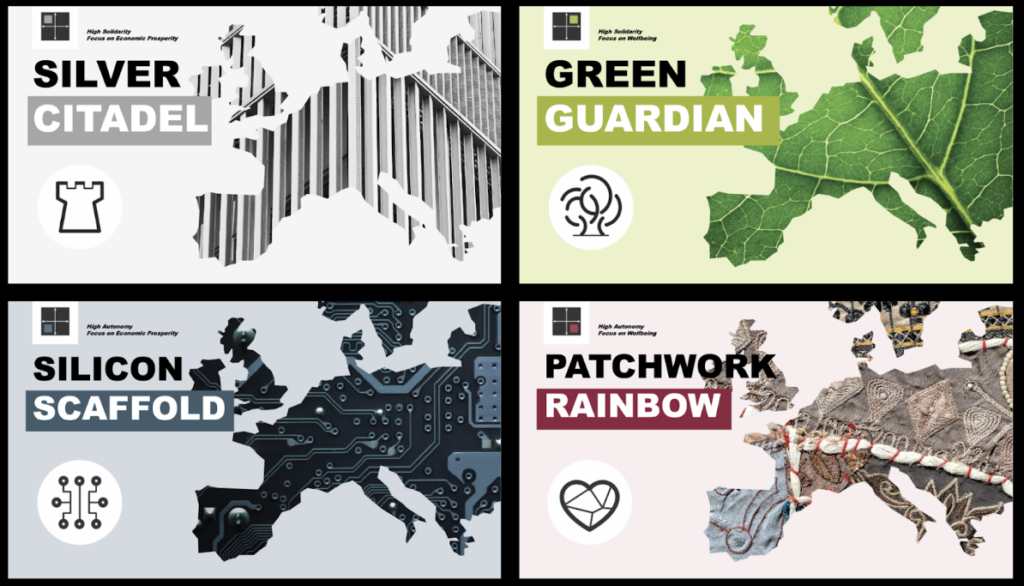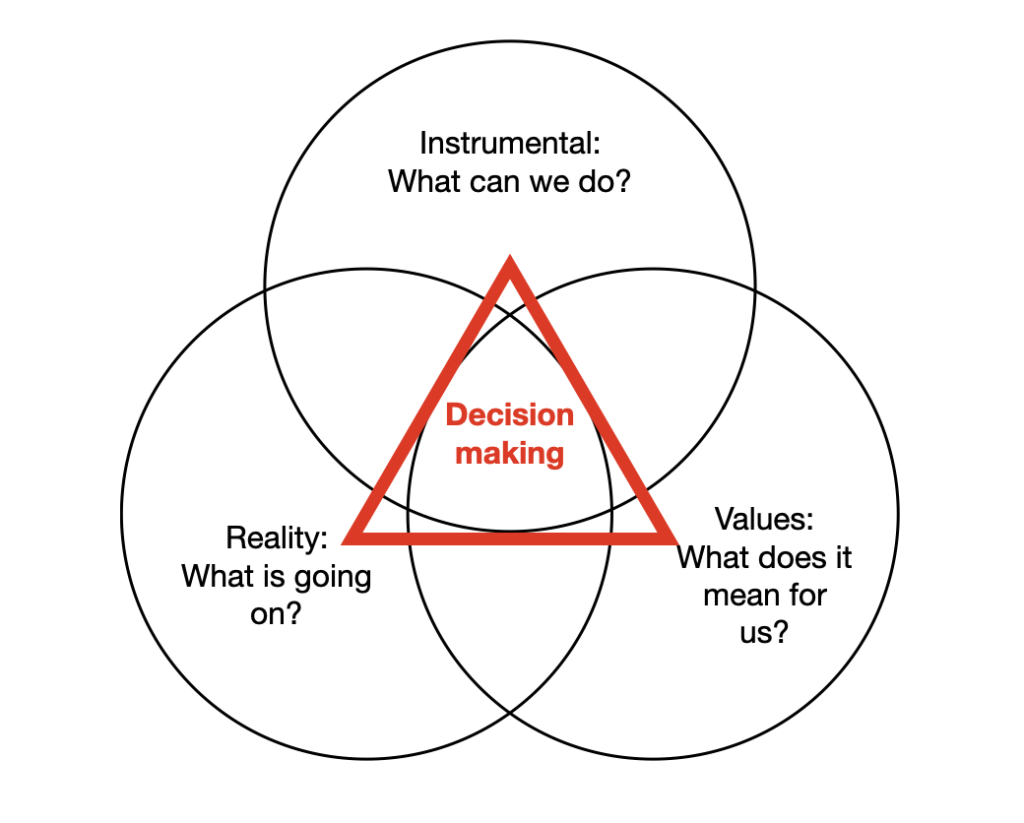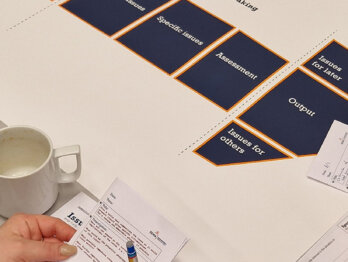Asking Magical Questions: Scenarios to explore the future of innovation agencies

If your organisation had a crystal ball, what questions would you ask about the future? What would you do with the answers it received? In this post, we consider the ways in which innovation agencies – government-funded or managed institutions that provide financial and other support to catalyse private sector innovation – can use imagined visions of the future to shape present decisions.
Today’s innovation agencies take on a wide range of tasks and duties, giving them distinct characteristics within their national and international context. Some agencies are strongly involved in the design of national innovation strategies, while others are primarily focused on delivery. Some seek to foster international competitiveness, while others focus on addressing regional disparities. Most of them use a mix of funding and other support instruments to encourage the development of new products, ideas and services, build competitiveness in particular sectors and/or drive innovation in response to societal challenges.
However, strategy requires these agencies to not only build on the identity they have inherited, but also to reflect on what will be required of them in the future.One way to do this is using scenarios: plausible visions of the future context, manufactured to challenge current assumptions. In our work, we asked: how can the use of scenarios help innovation agencies continue to deliver effective policy interventions within a shifting, uncertain environment?
Four visits to 2048
To answer this question, the Innovation Growth Lab (IGL) and TAFTIE (the European network of innovation agencies), convened a workshop with IMAJINE, a European Horizon-funded programme using scenarios to explore Europe’s future policy landscape. OPSI’s own Joshua Polchar served as a respondent to IMAJINE’s scenarios in 2021, drawing out the implications for public sector innovation. TAFTIE agency participants were invited to pose the questions they would ask a crystal ball, giving them certain knowledge of the times to come. Of course, such magic doesn’t exist – but “magical questions” can be powerful, as OPSI’s Heather Buisman pointed out. The questions we choose to ask about the future, and the way they are framed, tell us much about current strategic concerns.
The workshop then introduced IMAJINE’s four scenarios for the future of Europe in 2048, built using the Oxford Scenario Planning Approach which develops plausible visions in order to challenge assumptions about the future we may come to inhabit. Rather than expressing predicted or preferred futures, each scenario reveals different possible values, priorities and dynamics in Europe a generation from now.

IMAJINE’s scenarios include:
- SILVER CITADEL, in which a deeply centralised European power bloc uses artificial intelligence to manage economic prosperity and equity across its members.
- SILICON SCAFFOLD, where social and economic life migrates almost entirely to virtual spaces and corporate city-states are ascendant powers.
- PATCHWORK RAINBOW, diverging and hard-to-reconcile cultural and social norms cause Europe to form a mosaic of regions which are increasingly dependent on relationships and alliances elsewhere in the world.
- GREEN GUARDIAN, a postcapitalist order rises in response to the ravages of climate change, leading to a society whose overriding priorities are sustainability, survival, and wellbeing.
Respondents found themselves exploring fresh and unexpected questions, such as which aspects of the work of innovation policy makers would resist automation in a world of thriving machine intelligence. In a SILVER CITADEL world, agencies suggested that public servants might increasingly need to serve as the “conscience of the algorithm”, seeking to influence the decisions made by AI systems.
In a European ecosystem that looked more like SILICON SCAFFOLD, with increasingly blurred lines between the private and public sectors, agencies saw themselves as having a distinct role to address grand challenges or societal missions that corporations would be less incentivised to engage with – or agencies might themselves be spun out from government, serving as the innovation wing of a blended public-private authority.
PATCHWORK RAINBOW saw divergence and conflict between regions over social values including fundamentals of knowledge and trust. This raised the issue of how innovation is legitimised. If trust in science and evidence-based processes eroded across parts of the European patchwork, justification for policy interventions could depend on novel rationales and procedures. Innovation agencies could find themselves devising and defining new ways to authenticate expertise for politicians and the public.
Finally, in GREEN GUARDIAN’s postcapitalist future, innovation agencies suggested that they would likely need to shift their funding focus from adding economic value to dealing with wicked problems around scarcity and sustainability. Avoiding projects with a negative environmental impact would take the highest priority and sustainability would be a fundamental criterion for activities receiving innovation support.
IMAJINE’s scenarios are not forecasts or expressions of desired futures. Instead, they represent plausible visions with the potential to reveal current blindspots. Both opportunities and threats can sometimes be overlooked through our present frame of reference.
We went into this project looking for new measures and metrics, only to find the real, deeper question was about what we’re going to value in times to come.
Marie Mahon, Senior Lecturer, Geography, NMUI Galway and part of IMAJINE
After visiting four potential versions of 2048, we invited participants to return to 2022, bearing the insights from their journey. With this fresh perspective, they could seek signs that these scenarios may already be emerging around. For example, they observed elements of SILICON SCAFFOLD in Estonia’s e-resident experience today. The decisions that governments have made to balance economic prosperity and population health during the Covid-19 pandemic were also seen as anticipating some of the climate-driven tradeoffs of GREEN GUARDIAN.
Using the future to make wiser decisions today
Crystal balls that give definitive answers may not exist, but future scenarios can help us to ask better questions about what’s going on around us, why it matters and what we can do about it. They build on the “three judgments” to inform wise decision making articulated by the storied 20th century civil servant Geoffrey Vickers: What is going on? What does it mean for us? And what can we do about it?

We can consider these questions from the perspective of each scenario, exploring the implications each future holds for policies and processes which are in place today. And we can ask ourselves: if one of those futures did come to pass, how would our work today be judged in hindsight, by the values of an emergent world?
In the spirit of anticipatory innovation – seeking to “consistently perceive, understand and act on the future as it emerges in the present” – opening our eyes to the complexity of multiple tomorrows can give us a clearer and more actionable view on the choices and challenges that innovation agencies face today.












